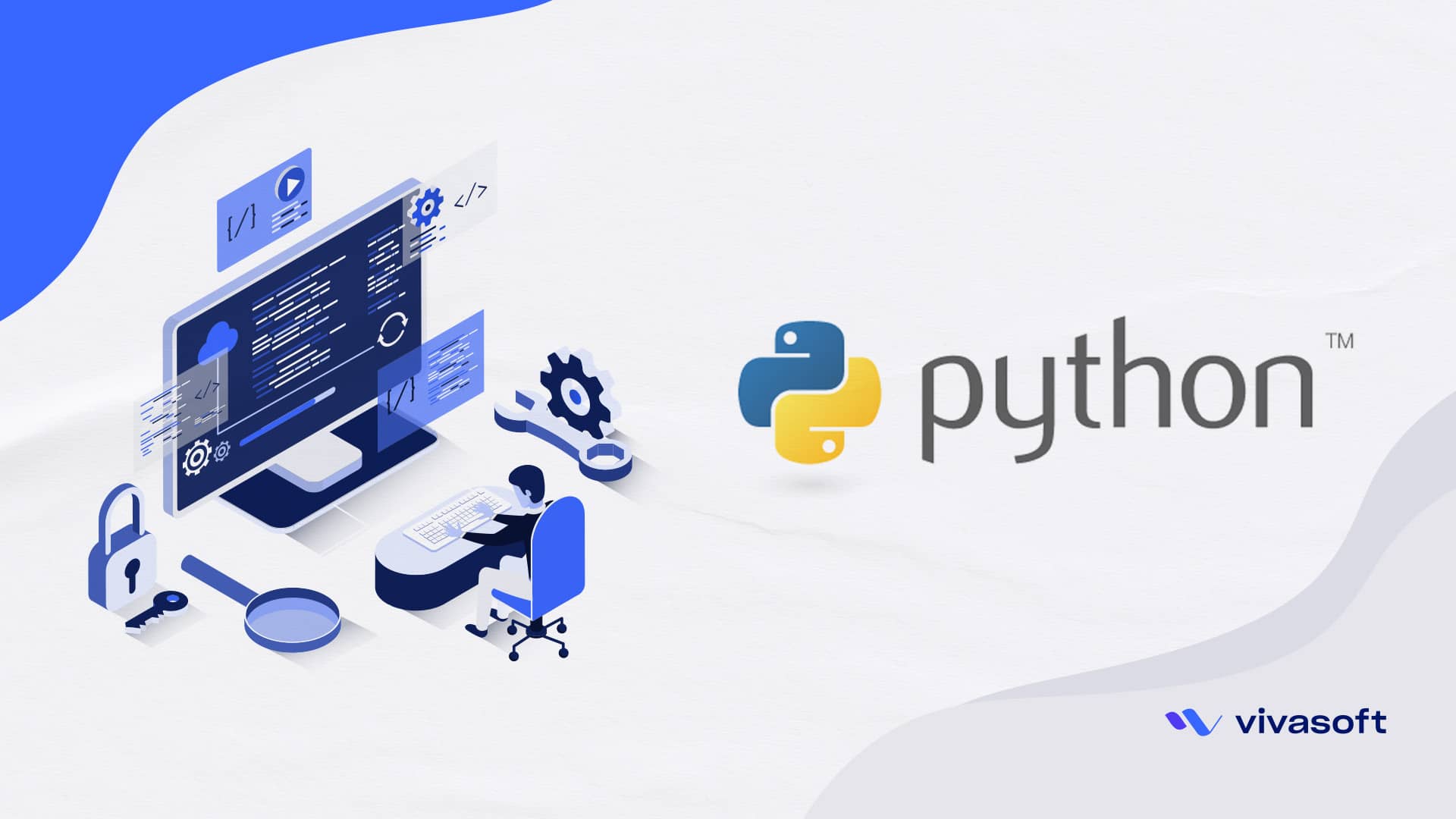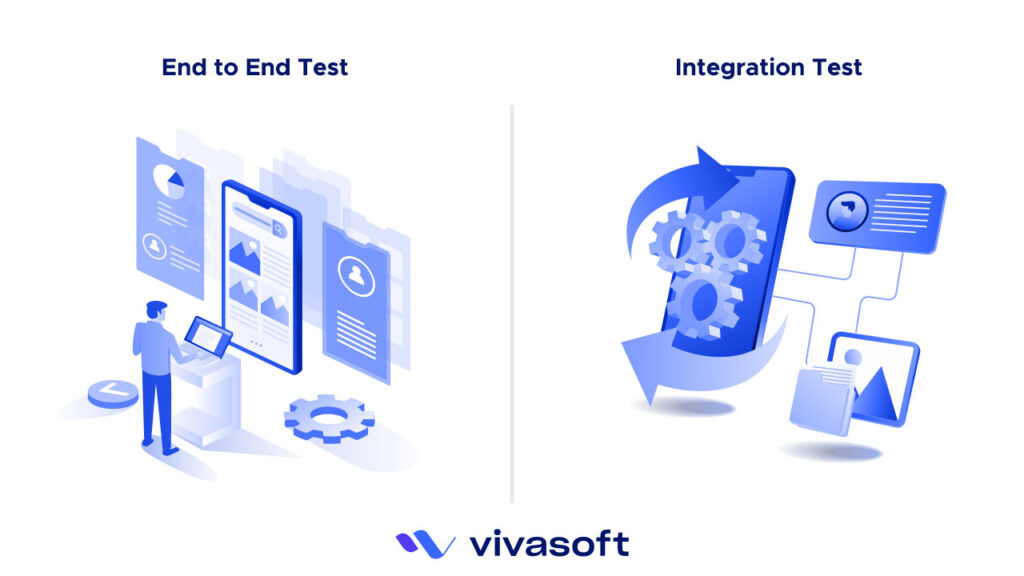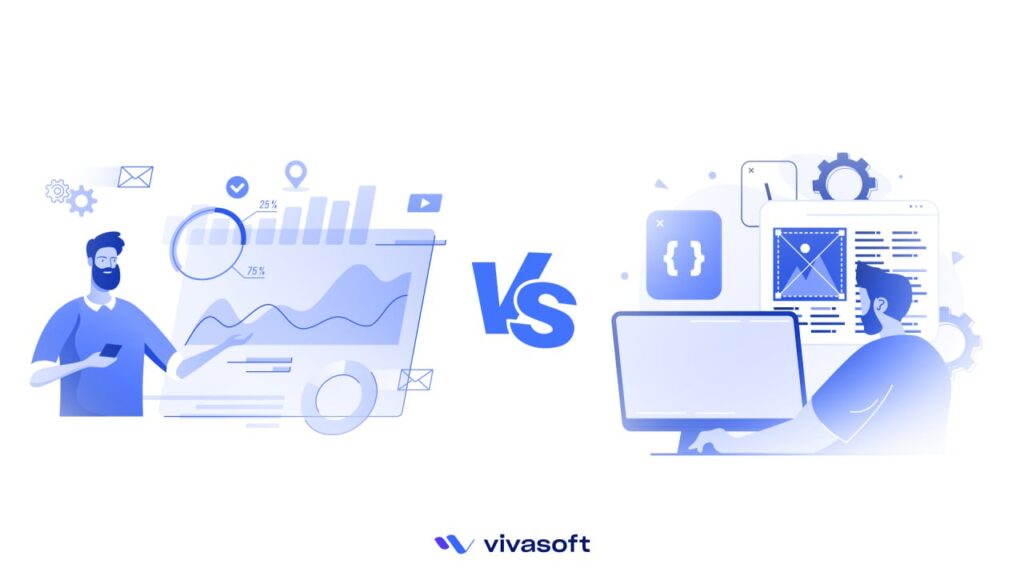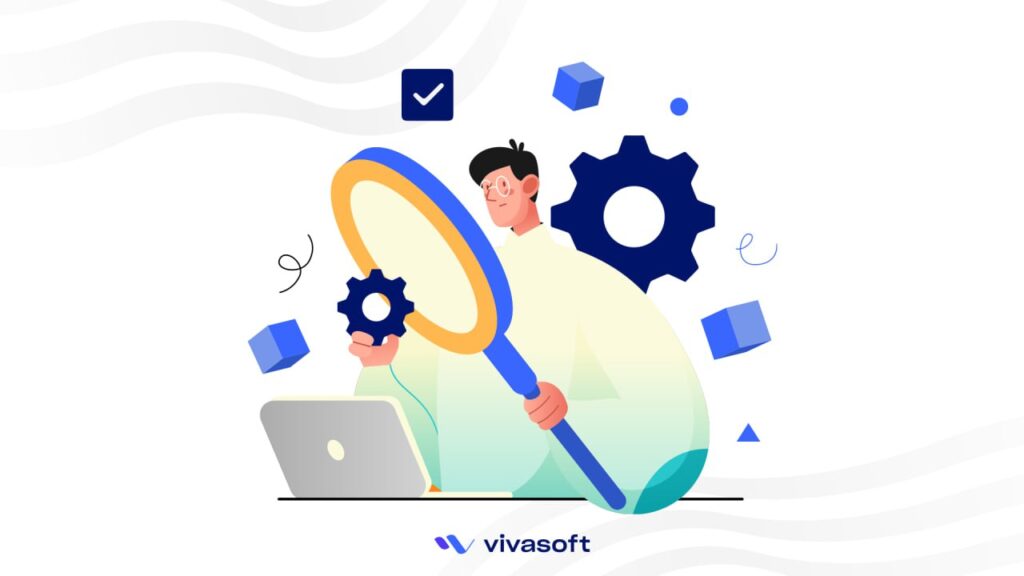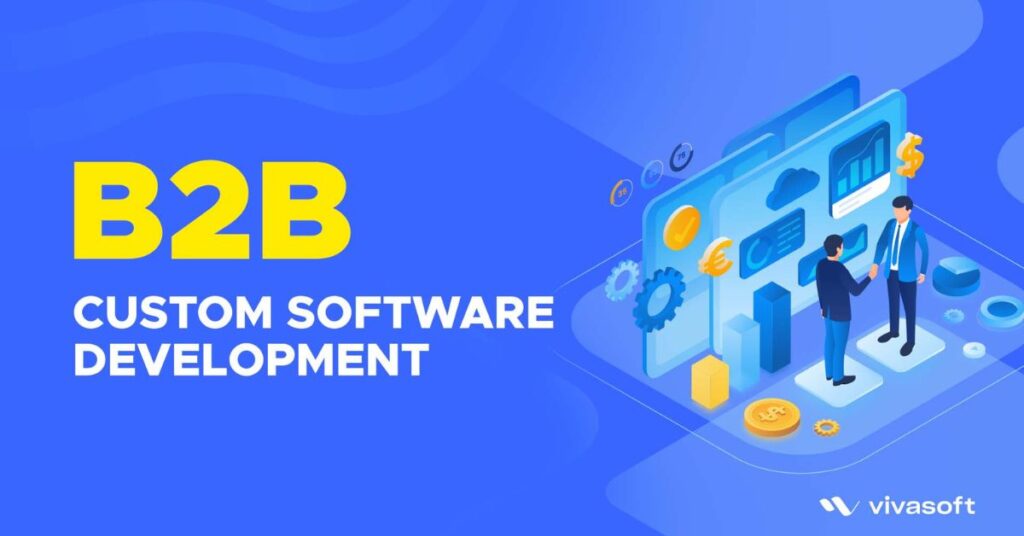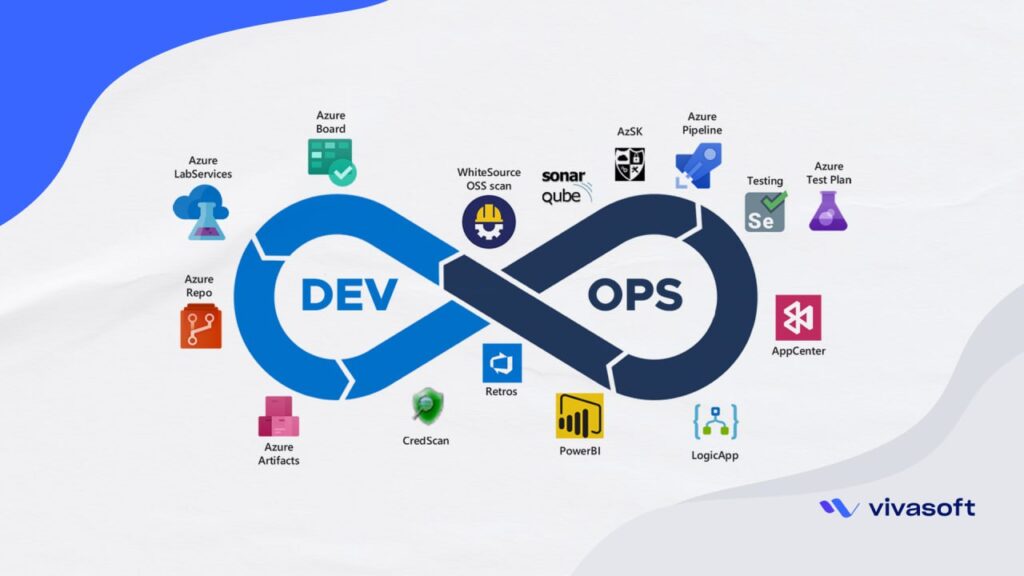Yes, Python is good for software development. Python has become one of the most widely used programming languages for software development in recent years, and there are a number of convincing reasons for this.
Python is renowned for being an excellent tool for streamlining end-to-end software development resources because of its broad variety of pre-built libraries, integrated framework for unit tests, and OS-independent capability.
Python is actually simple to learn, easy to write in, and easy to read, despite being frequently associated with high-level development.
In this post, we’ll look at the aspects that make Python so well-liked for software development and give a quick review of the essential features that set it apart as a top option.
What is Python?
A high-level, adaptable, and interpreted programming language known for its clarity, readability, and wide range of uses is Python.
Python was first launched in 1991, and since then it has grown to become one of the most well-liked software development resources and frequently used programming languages globally.
Python is perfect for prototyping programming because of its interpreted nature, which speeds up creation and testing.
Its numerous libraries and frameworks, including NumPy, Pandas, TensorFlow, Django, and Flask, offer pre-built tools and functions that speed up development, reducing development time and increasing productivity.
Additionally, Python’s open-source nature promotes creativity and cooperation, making it an appealing option for both inexperienced developers and seasoned professionals.
Is Python Good for Software Development: Advantages and Success
Yes, because of its numerous benefits and adaptability. It is widely used in several fields, including artificial intelligence, scientific computing, web development, and data science. Let’s look at some of Python’s main benefits for software development.
Advantages of Python in Software Development
1. Readability and Ease of Learning
Python is a great option for software development because of its simplicity and clean syntax. Python is also easier to learn than many other programming languages, making it usable by both novice and experienced engineers.
2. Extensive Standard Library
Python has a comprehensive standard library that makes software development jobs easier. From file handling and networking to data processing and web development, this substantial collection of pre-built modules and functions offers a wide range of capability. These built-in tools can be used by developers to speed up development and save time and effort.
3. Cross-Platform Compatibility
Python’s cross-platform functionality guarantees that code may operate without any issues on a variety of platforms, including Windows, macOS, and several Unix-based systems.
For software developers, having this interoperability is a big plus because it reduces deployment hassles and compatibility problems.
4. Large and Active Community
Python has a sizable and vibrant end-to-end software development community that offers helpful information and support.
Additionally, the Python ecosystem is always being improved by community contributions, and new libraries and tools are constantly being developed.
Python Frameworks and Their Use Cases for Software Development
When it comes to building robust software applications, Python offers a range of frameworks that simplify development, increase efficiency, and ensure code maintainability.
In this article, we will explore some of the prominent Python frameworks and their specific use cases in software development.
Django
A high-level Python web framework called Django enables the quick creation of safe and dependable websites.
It is open source and free, has a strong community, excellent documentation, and a variety of free and paid support options.
Use Cases
- Web Application Development: Django’s modular design and integrated features make the development process simpler.
- Backend Development: Django is widely used for backend development, where it can handle tasks like creating RESTful APIs and managing databases using the Django ORM.
- Rapid Prototyping: Django’s rich ecosystem of tools and libraries enables developers to quickly develop proof-of-concept applications, making it suitable for rapid prototyping.
Flask
A compact and modular microframework for Python is called Flask. It offers the necessities for web development while letting programmers include additional components and extensions as required.
Use Cases
- Microservices: It is perfect for creating modular microservices that are simple to integrate into bigger systems due to its lightweight design and versatility.
- API Development: Flask’s simplicity and building RESTful APIS makes it an attractive choice for this purpose.
- Small to Medium-sized Web Applications: Flask is perfect for developing simpler web applications and prototypes where a full-fledged framework like Django might be overkill.
- Extensions and Customization: Flask’s extensive ecosystem of extensions allows developers to customize the framework to suit their specific needs.
Pyramid
Providing a balance between simplicity and complexity, Pyramid is a flexible and adaptable web framework. Because of its scalability and adaptability, it may be used for projects of all sizes and levels of complexity.
Use Cases
- Large-scale Web Applications: It can build complex web applications that require flexibility and scalability.
- Custom Web Solutions: Pyramid enables for the quick construction of prototypes and proof-of-concept applications and may be customized to fit individual project requirements.
FastAPI
A contemporary web framework called FastAPI was created specifically for Python developers to create high-performance APIs. It creates lightning-fast APIs by fusing Python’s simplicity with asynchronous features.
Use Cases
- API Development: FastAPI is a top choice for API development because it automatically generates API documentation.
- Real-time Applications: FastAPI is suitable for developing real-time applications that require WebSocket support for bidirectional communication.
- Microservices: FastAPI is a great option for building effective and lightweight microservices due to its efficiency and scalability.
Tornado
A Python web framework called Tornado was created primarily for creating real-time online applications and high-performance network services. It is perfect for applications that need to handle WebSockets and lengthy polling effectively.
Use Cases
- Real-time Web Applications: Tornado is the go-to solution for creating online applications that need asynchronous communication, such chat programs and live notifications.
- Long Polling and WebSockets: It is well-suited for applications that require real-time updates because of its prowess at handling extended polling and WebSockets.
- High-Performance Applications: For applications with strict performance requirements, Tornado’s architecture is geared at high concurrency and low latency.
Bottle
Bottle is a micro web framework designed for creating small web applications and APIs. It is known for its simplicity and minimal dependencies, making it suitable for small projects and single-file applications.
Use Cases
- Small Web Applications: Easy option for little projects because of its minimal weight.
- Prototyping: It can quickly develop proof-of-concept applications because to its simplicity and low setup requirements.
- Single-File Applications: Bottle’s design enables programmers to produce single-file programs with few dependencies, making it appropriate for small-scale projects.
CherryPy
CherryPy is a Python web framework that emphasizes a minimalistic and object-oriented approach to web development. It allows developers to build web applications in an object-oriented manner.
Use Cases
- Web Application Development: CherryPy’s object-oriented design is suited for building web applications with a focus on reusability and modularity.
- Small to Medium-sized Projects: It can handle projects of varying complexity, making it a versatile choice for developers.
- Learning and Teaching: It is often used as an educational tool to teach web development concepts.
TurboGears
TurboGears is a full-stack web framework that offers a complete solution for developing end-to-end web applications. It emphasizes modularity and is suitable for handling large-scale projects with multiple components.
Use Cases
- Full-Stack Web Applications: TurboGears streamlines the development process by providing tools for both frontend and backend development.
- Large-scale Projects: TurboGears’ modularity and flexibility make it suitable for handling projects with multiple components.
- Integration with Existing Systems: For companies wishing to update their old applications, TurboGears can be integrated into current systems.
Falcon
Falcon is a minimalist web framework designed for building high-performance RESTful APIs. It focuses on speed and efficiency, making it an excellent choice for applications that require high scalability.
Use Cases
- API Development: Falcon’s focus on performance is advantageous for applications that require rapid response times.
- Microservices: Falcon’s design offers efficient and lightweight microservices that can be easily scaled as needed.
- Scalable Web Applications: Falcon is a valuable choice for building web applications that require high scalability and can handle a large number of concurrent requests.
Web2py
Web2py is a full-stack web framework designed for developing complete web solutions. It focuses on rapid application development (RAD) and includes features for error tracking and deployment management.
Use Cases
- Full-Stack Web Applications: A full solution for creating end-to-end web applications is offered by Web2py.
- Rapid Application Development (RAD): Web2py’s ease of use and built-in features facilitate rapid application development.
- Error Tracking and Deployment Management: Web2py includes a built-in ticketing system for managing errors and simplifying deployment management.
Potential Drawbacks and Limitations
Performance Considerations
- Python’s Interpreted Nature and Performance Challenges:
Python can run more slowly because it is an interpreted language, especially for CPU-intensive activities.
- Mitigation Strategies:
By using tools like Cython, which enables Python code to be built to C extensions for enhanced efficiency, developers can overcome performance issues. Additionally, Just-In-Time (JIT) compilation is made available by projects like PyPy to speed up Python performance.
Global Interpreter Lock (GIL)
- Explanation of GIL and Its Impact on Multi-threading:
Python’s Global Interpreter Lock (GIL) restricts concurrent execution of multiple threads in a Python process, potentially limiting multi-threading benefits.
- Alternatives for Multi-threading in Python:
To overcome GIL-related limitations, developers can explore alternatives such as multiprocessing for true parallelism through separate processes or leverage Python’s threading module for I/O-bound tasks where GIL’s impact is less significant.
Not Suitable for All Domains
- Discussion on Cases Where Python May Not Be the Best Choice:
Despite Python’s versatility, there are several situations when it might not be the best option. Examples include real-time systems that require extremely low latency and favor languages like C or Rust.
- Examples of Domains Where Other Languages or Frameworks Excel:
Specialized languages or frameworks are advantageous for some domains. For instance, C++ or Java are frequently used in high-frequency trading systems, whereas Unity (C#) or other game engines are used in game creation. Systems programming may prefer dialects of C or Go.
Python's Role in Modern Software Development
Process management skills are enhanced by the popular open-source programming language Python in software development. While preserving a basic syntax, Python software development enables create complicated multi-protocol network systems.
Don’t forget that Python is used by well-known platforms like Google, Instagram, and Spotify.
Python's Influence on Major Businesses and Projects
In this part, we will look at examples of businesses that use Python and its frameworks, as well as famous projects that have been successful thanks to Python-based development.
Instagram (Django)
The backend of Instagram, one of the biggest social networking sites on the planet, is powered by the Python web framework Django.
Instagram’s success has been largely attributed to Django’s scalability and security capabilities, which can handle millions of users and tons of user-generated content.
Dropbox (Twisted and Python)
The widely known cloud-based file-sharing service Dropbox was first created mostly with Python. Dropbox’s development of a dependable and effective file synchronization system was made possible by Twisted, an event-driven networking engine, and Python’s simplicity.
Google (Python for Web Development)
Google utilizes Python extensively for web development, including popular services like YouTube, Google Search, and Google App Engine.
Python’s ease of use and rapid development capabilities align with Google’s emphasis on efficiency and developer productivity.
NASA's Curiosity Rover (Robot Framework)
Robot Framework, an open-source Python-based test automation framework, was used by NASA’s Mars Curiosity Rover to test and certify the rover’s software.
Netflix (PyTorch)
Netflix uses the well-known Python deep learning toolkit PyTorch for a variety of machine learning tasks. Because of PyTorch’s adaptability and dynamic computation structure, it may be used to create and train sophisticated recommendation systems that improve users’ streaming experiences.
Uber (Flask)
Uber’s web-based platform utilizes Flask, a lightweight Python web framework, to provide real-time ridesharing and logistics services.
Final Thoughts
Choosing the appropriate programming language is crucial in the constantly changing world of software development. The appeal of Python in software development services lies in their ability to combine readability, adaptability, and a thriving ecosystem.
It is now the preferred language for developers everywhere. With the aforementioned benefits of Python for software development, it is clear that this language breaks down barriers and inspires developers’ creativity.
Frequently asked questions (FAQs)
Is Python suitable for large-scale, enterprise-level software projects?
Yes, Python is appropriate for complex, enterprise-level software applications. It is a good option due to its adaptability, readability, and vast ecosystem of libraries and frameworks.
Python’s applicability for these projects, however, is dependent on a variety of elements, including the project’s requirements, the development team’s level of experience, performance requirements, scalability needs, integration requirements, maintenance considerations, and security requirements.
Is Python or C++ better for software development?
Python has a wide range of practical uses; programmers frequently use it to power artificial intelligence, machine learning, the web, and development. C++ is excellent for operating systems and hardware-level programming, but it is less suitable for web development.
What are the costs associated with using Python software?
Python is an open-source programming language, meaning you may download it for free along with its frameworks and modules and use it for nothing. Since there are no license fees, any business can benefit economically from this.
Because of Python’s large library and constant library updates from Python champions, development time is quick and the process is that much more effective.
Why is Python considered a good choice for software development?
For research and data science, Python is the most used language. People with little to no development experience can readily learn Python and use it to handle data for research, reporting, predictable or regression analysis, and more because of its simple, customizable syntax.
Is Python the best language for software development?
Yes. With improved process management features, Python is a very well-liked open-source programming language. It can create sophisticated multi-protocol network applications while still preserving a clear and simple syntax. Python is used by websites like Google, Instagram, Spotify, and Reddit.




